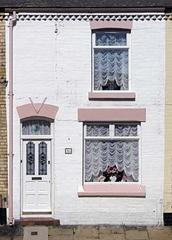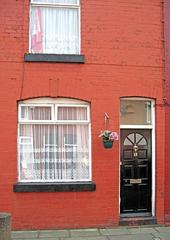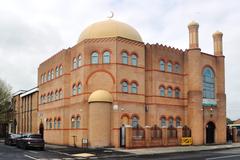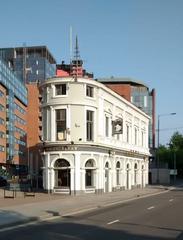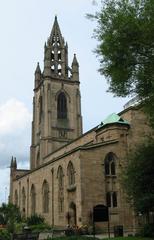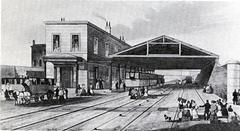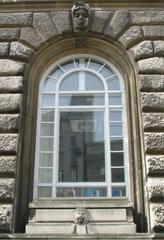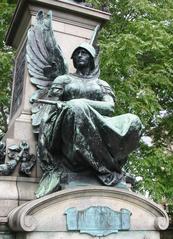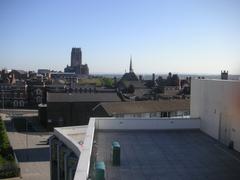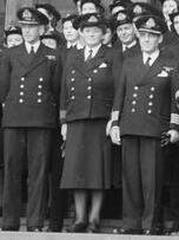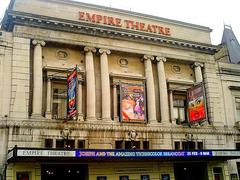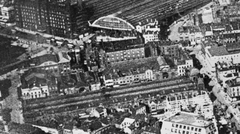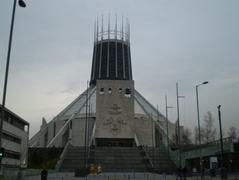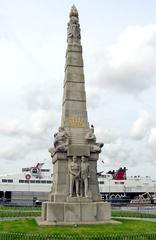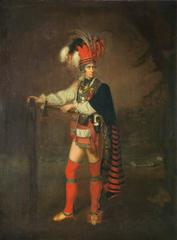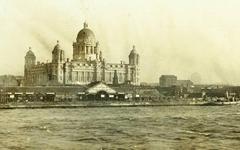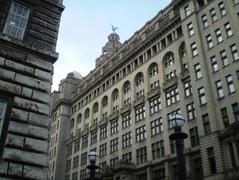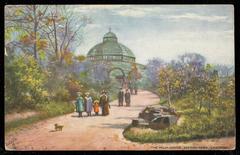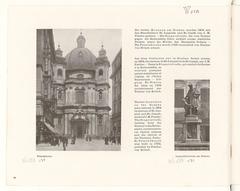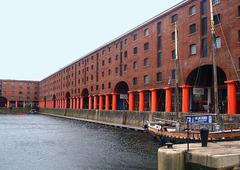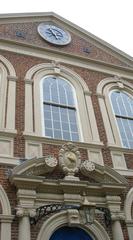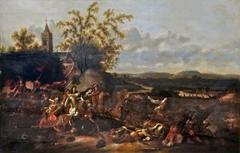
Nelson Monument Liverpool: Visiting Hours, Tickets, and Historical Sites Guide
Date: 04/07/2025
Introduction
The Nelson Monument in Liverpool is a striking emblem of British naval history and the city’s maritime legacy. Erected shortly after the Battle of Trafalgar in 1805, it honors Admiral Horatio Nelson, one of Britain’s most revered naval commanders. Positioned in Exchange Flags, near Liverpool Town Hall, the monument not only commemorates Nelson’s sacrifice but also symbolizes Liverpool’s global maritime status during the late 18th and early 19th centuries. Designed by Matthew Cotes Wyatt and sculpted by Richard Westmacott, the monument stands out for its neoclassical artistry and has been recognized as Liverpool’s first major public statue and a Grade II* listed heritage asset.
Today, the Nelson Monument remains freely accessible at all hours, with wheelchair-friendly surroundings and proximity to key historical sites such as the Maritime Museum and Albert Dock. It serves as a gathering point for public ceremonies, educational programs, and cultural events, offering both locals and visitors a chance to reflect on Liverpool’s past and present. This guide provides an in-depth look at the monument’s history, design, cultural significance, and practical tips for visitors, helping you make the most of your visit. For further details, including guided tours and current events, refer to the official Liverpool tourism website and other reputable sources (Kiddle, Wikipedia, Liverpool Echo).
Table of Contents
- Introduction
- Origins and Commissioning
- Design and Artistic Features
- Historical Context and Maritime Identity
- Contemporary Significance and Debate
- Visiting Information
- Cultural and Educational Engagement
- Frequently Asked Questions (FAQ)
- Key Dates and Figures
- Conclusion
- References
Origins and Commissioning
The Nelson Monument was commissioned in the aftermath of the Battle of Trafalgar in 1805, a pivotal conflict where Admiral Nelson led the British fleet to victory against French and Spanish forces. Nelson’s death in battle galvanized Liverpool’s civic leaders, who resolved to commemorate his achievements by erecting a public monument (Kiddle). Initial funding came from the city council, but broad public support quickly expanded the budget through donations, ultimately raising approximately £8,930—a testament to Liverpool’s maritime pride and respect for Nelson’s legacy.
Design and Artistic Features
Competition and Construction
The design was selected through a public competition, won by Matthew Cotes Wyatt, in collaboration with renowned sculptor Richard Westmacott. The foundation stone was laid on July 15, 1812, and the monument was unveiled on October 21, 1813, the eighth anniversary of Nelson’s death (Kiddle). Originally sited near Liverpool Town Hall, the monument was relocated to Exchange Flags in 1866 and its base reconstructed in granite for increased durability.
Monument Structure and Materials
The monument stands approximately 29 feet (9 meters) tall, with a broad granite base, a drum-shaped Westmorland marble pedestal, and a dramatic bronze sculptural group atop (Wikipedia). Key features include:
- Bronze Prisoners: Four chained statues symbolize Nelson’s victories at Cape St Vincent, the Nile, Copenhagen, and Trafalgar, representing defeated adversaries (Kiddle).
- Bas-Reliefs: Detailed bronze panels between the prisoners depict additional naval engagements.
- Laurel and Lions’ Heads: Laurel garlands hang from lion heads, with chains connecting to the prisoners, signifying victory and subjugation.
- Inscription: The base is emblazoned with Nelson’s famous Trafalgar signal, “ENGLAND EXPECTS EVERY MAN TO DO HIS DUTY.”
The central group features a heroic, idealized figure of Nelson with Victory, Death, a British sailor, and Britannia—highlighting his sacrifice and the nation’s gratitude (Military History Fandom), (Bygone Liverpool), (Victorian Web).
Historical Context and Maritime Identity
In the late 18th and early 19th centuries, Liverpool was a major maritime hub—its economy deeply intertwined with shipping, trade, and the transatlantic slave trade. Nelson’s victories were seen as critical to safeguarding Britain’s commercial interests, making the monument both a local and national symbol of pride (University of Liverpool). The Nelson Monument thus encapsulates Liverpool’s self-image as a leading seafaring city.
Contemporary Significance and Debate
As public awareness of Britain’s imperial legacy has grown, monuments like Nelson’s have been scrutinized. While Nelson was not a slave owner, he did support Britain’s colonial interests and the slave trade, prompting renewed debate over the monument’s meaning (University of Liverpool). Recent movements, such as Black Lives Matter, have called for greater historical context—often through interpretive plaques and educational programming—rather than removal.
Visiting Information
Location and Accessibility
The monument is located in Exchange Flags, a pedestrianized public square in Liverpool’s city center, adjacent to Liverpool Town Hall. The area is fully accessible, with step-free walkways and proximity to public transport (Liverpool Central and James Street train stations, as well as numerous bus routes).
Visiting Hours and Tickets
- Hours: The monument is outdoors and accessible 24/7, year-round.
- Tickets: No admission fee; open access for all.
Guided Tours and Events
While there are no tours solely dedicated to the monument, it is regularly featured in heritage walking tours and city history walks. Exchange Flags frequently hosts cultural events, markets, and festivals, with the monument serving as a popular meeting point (All Events Liverpool), (Liverpool City Region Destination Partnership).
Nearby Attractions
- Western Approaches Museum: WWII command center museum
- Liverpool Town Hall: Historic civic building
- Museum of Liverpool: Explores city history and culture
- Albert Dock: Maritime attractions and galleries
Photography Tips
For the best photos, visit during early morning or late afternoon when light accentuates the monument’s bronze figures and granite base. Nighttime illumination adds dramatic effect (Nomads Unveiled).
Cultural and Educational Engagement
The Nelson Monument is both an artistic and educational touchstone, featured in many heritage tours and public ceremonies (Culture Liverpool). School groups and history enthusiasts can use interpretive plaques and nearby museums to delve deeper into Liverpool’s maritime and wartime past. Contemporary art installations and commemorative events frequently engage the monument as a platform for dialogue about the city’s evolving identity (Liverpool Echo).
Frequently Asked Questions (FAQ)
Q: What are the Nelson Monument’s visiting hours?
A: The monument is outdoors and accessible 24/7.
Q: Is there an entry fee or are tickets required?
A: No, visiting the monument is free.
Q: Is the site wheelchair accessible?
A: Yes, the surrounding square is paved and step-free.
Q: Are guided tours available?
A: The monument is included in many city walking tours; check with local tour operators or the official tourism website.
Q: Where can I find souvenirs?
A: The Liverpool Tourist Information Centre at Liverpool ONE offers maritime-themed souvenirs.
Key Dates and Figures
- Battle of Trafalgar: October 21, 1805
- Monument Commissioned: After 1805
- Foundation Stone Laid: July 15, 1812
- Unveiling: October 21, 1813
- Relocation to Exchange Flags: 1866
- Designers: Matthew Cotes Wyatt (designer), Richard Westmacott (sculptor)
- Public Subscription: £8,930 raised (Kiddle)
Conclusion
The Nelson Monument stands as a powerful testament to Admiral Horatio Nelson’s naval achievements and to Liverpool’s enduring maritime identity. Its neoclassical grandeur, accessible public setting, and evolving cultural role make it a must-see landmark for anyone interested in British history, public art, or Liverpool’s heritage. As Liverpool continues to navigate its complex past—including ongoing debates about imperial legacy—the monument remains both a site of remembrance and a platform for education, art, and civic pride.
To enhance your visit, consider exploring nearby historical sites, joining a guided tour, or using digital resources like the Audiala app for immersive audio tours. For the latest visitor information, events, and travel tips, consult the official Liverpool tourism website.
References and Further Reading
- Nelson Monument Liverpool: History, Visiting Information, and Cultural Significance, 2025, Kiddle (Kiddle)
- Discovering the Nelson Monument Liverpool: History, Art, and Visiting Information, 2025, Wikipedia (Wikipedia)
- Nelson Monument Liverpool: Visiting Hours, Tickets, History, and Cultural Significance, 2025, Liverpool Echo (Liverpool Echo)
- Visiting the Nelson Monument in Liverpool: Hours, Tickets, and Cultural Insights, 2025, VisitLiverpool (VisitLiverpool)
- Nelson Monument Liverpool and Controversies, 2025, University of Liverpool (University of Liverpool)
- VE Day 80th Anniversary Events at Exchange Flags, 2025, Culture Liverpool (Culture Liverpool)
- Liverpool City Region Summer 2025 Event Highlights, 2025, Liverpool City Region Destination Partnership (Liverpool City Region Destination Partnership)








